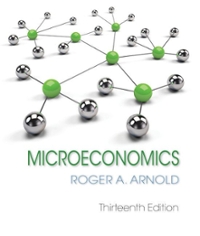Answered step by step
Verified Expert Solution
Question
1 Approved Answer
3 paradigms paradigm of neoclassical economics is a broad theory that focuses on supply and demand as the driving forces behind the production, pricing, and



3 paradigms
- paradigm of neoclassical economics is a broad theory that focuses on supply and demand as the driving forces behind the production, pricing, and consumption of goods and services.
- Economic mixed paradigm is a political and economic ideology based on strong support for a market economy and private property in the means of production.
- Radical economics was based on the economics of Marx. Inequality of incomes and wealth are seen as the sources of disequilibria in market economies.
I have given a description of the 3 paradigms. The 3 are neoclassical, mixed and radical paradigm I need an example for each one based on my topic US-China trade war
?






Step by Step Solution
There are 3 Steps involved in it
Step: 1

Get Instant Access to Expert-Tailored Solutions
See step-by-step solutions with expert insights and AI powered tools for academic success
Step: 2

Step: 3

Ace Your Homework with AI
Get the answers you need in no time with our AI-driven, step-by-step assistance
Get Started


